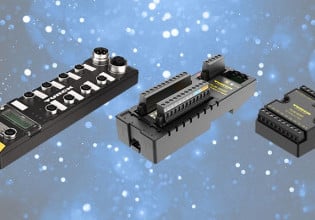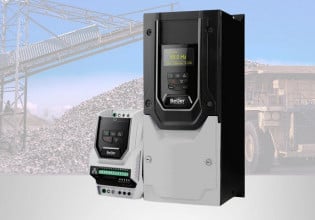An Introduction to User Requirement Specifications (URS)
Learn all about user requirement specifications (URS), including what should and should not be included and their importance for organizations planning to purchase new equipment.
A user requirement specification (URS) forms the basis for purchasing new equipment in any process-related organization. While the owner or management can decide to implement a URS on the purchase of any size of equipment, it is particularly important for large scale equipment often called asset or capital equipment.
The URS describes technical requirements in all aspects of any equipment that the organization decides to purchase for its productivity. In addition, it includes commercial terms including shipping, payment terms, warranty, and what to do in the case of any disputes.
The Importance of URS Documents
A properly written URS helps the supplier or vendor to fully understand the client’s requirements. This, in turn, helps the supplier design a system or specialized equipment that completely satisfies needs and expectations. Alternatively, if there is no URS, it can create confusion between both parties blaming each other for failures resulting in the waste of time and resources.
Figure 1. The typical life cycle of a URS.
For some industries, a URS also helps with the completion of regulatory requirements. Some regulatory bodies require that the URS is completed before the purchase of any equipment. It also forms a basis for validation activities including installation qualification (IQ) and operational qualification (OQ).
A properly-written URS can even help with handling disputes if they arise, preventing the termination of business between two parties. For example, it can suggest consulting third party resources with mutual consent if the problem has gone far beyond the limits of both.
Key Sections of a URS
The design and format of each URS vary from organization to organization and depends on the requirements of the individual organization. However, there are key parts of every URS that can be classified into the following sections:
- Objective
- Technical specifications
- Design Data
- Documentation
- Installation and commissioning
- Delivery
- Training
- Commercial Terms
- Approvals
Objective
The objective includes a basic overview and first impression of the client’s requirements. In other words, it states everything the client requires from the supplier. It can include:
- Scope of the URS
- Capacity/productivity of the desired equipment
- Regulatory compliance, if any. to be followed
Technical Specifications
The technical specifications section includes the technical requirement of the system. It can include:
- Design and Construction: The basic design or construction and any type of measurement that could be helpful in physical construction. Also any metallurgy requirement for specific industries.
- Process Steps: Specific process requirements for equipment such as cleaning and washing.
- Software: Any software related compliance or requirements. For example, production data storage or recipe management of the operations. It can also include limitations to the access of stored data to prevent manipulation.
- Safety Requirements: A safety system must be in place so that the process is safe for both man and material. It can include alarm systems, safety covers for moving parts, or a machine stop mechanism in case of abnormalities.
Design Data
Design data is the proof the supplier provides showing that they have followed the guidelines as set by the client. Not only does this section serve proof, but the client can also show this information to regulatory bodies when demanded, for example, in the case of the pharmaceutical industry. It can include:
- Calibration certificates for the instrument and temperature-related devices
- Material data sheets showing that the desired material has been used in the critical process equipment, for example, a stainless steel (SS 316L) requirement in the food or water-related industries.
Documentation
The documentation section includes whatever types of documentation required by and for the user. Any document that a user thinks is necessary should be mentioned here, including an operational manual, electrical diagrams, P&ID diagrams, and other mechanically-related documentation.
Installation and Commissioning
This section includes the procedures for the installation and operation of the system or equipment. It can define what each party will be responsible for during installation, whether the visit of the manufacturer is required, and what to do if the system fails to start.
Delivery
This section includes the terms and conditions of the equipment delivery including who will bear the responsibility of delivery and related things.
Training
The training section details the procedure for the training of the system after it has been installed and commissioned.
Commercial Terms
This section details everything in the financial sector, including warranty, price, banking information, and other finance-related issues.
Approval Section
The final section of every URS is the approval section, which includes all of the necessary signatures of necessary approval departments, including:
- Key departments such as quality assurance, production, engineering
- Responsible head of the facility/plant
What Information is Needed for a URS?
Because a URS is the initial building block in the planning of any system, it should be thoroughly prepared with due consideration and care. A good URS helps the organization and its people to achieve their combined targets. It is developed by accurate information that comes from the concerned people and processes. The main theme is identifying the correct people and processes needed to provide the information necessary in the development of a URS.
The following points of contact can help develop an effective URS:
1. Gather information from the people who will have a close working relationship with the equipment. If it is the case of the production department, make sure to get input from the operator or supervisor responsible for that particular product.

Figure 2. For a successful URS, gather information from the workers who will use the equipment on a daily basis.
2. Maintenance persons can also be a great source of information. After production, they have proximity to the system and can give valuable feedback regarding the life of the equipment and any process improvement.
3. Local suppliers of the related components like motors, pumps, gearboxes, PLC, HMI, and more can also be a source of the information. If components the manufacturer plans to use are not locally available, the manufacturer would be requested to change the specifications so that time and money is not wasted in part arrangement from the manufacturer in case of failure
4. Pay special attention to environmental requirements like humidity and temperature. These environmental conditions have a huge impact on the life and performance of the installed equipment.
5. Feedback from quality assurance specialists helps to provide a better understanding of the regulatory requirements of the industry. This means their feedback will greatly help with fulfilling the regulatory requirements.
What Does NOT Go into a URS?
While it is good to include as much information as necessary and possible to have a solid piece of documentation, there are certain aspects to avoid, because they simply create confusion and make the process lengthier and more difficult.
Some things a URS doesn’t need to include are:
- Mentioning the certain regulatory requirements you want as a whole to be fulfilled. Be specific in mentioning the requirement, but regurgitating the entire requirement is unnecessary.
- Never mention anything that gives a sense of finance or money. These things should be covered in their own respective channel.
- Avoid duplication. It costs you additional time and money and will only be beneficial to the supplier
- Don’t use difficult and confusing statements.







